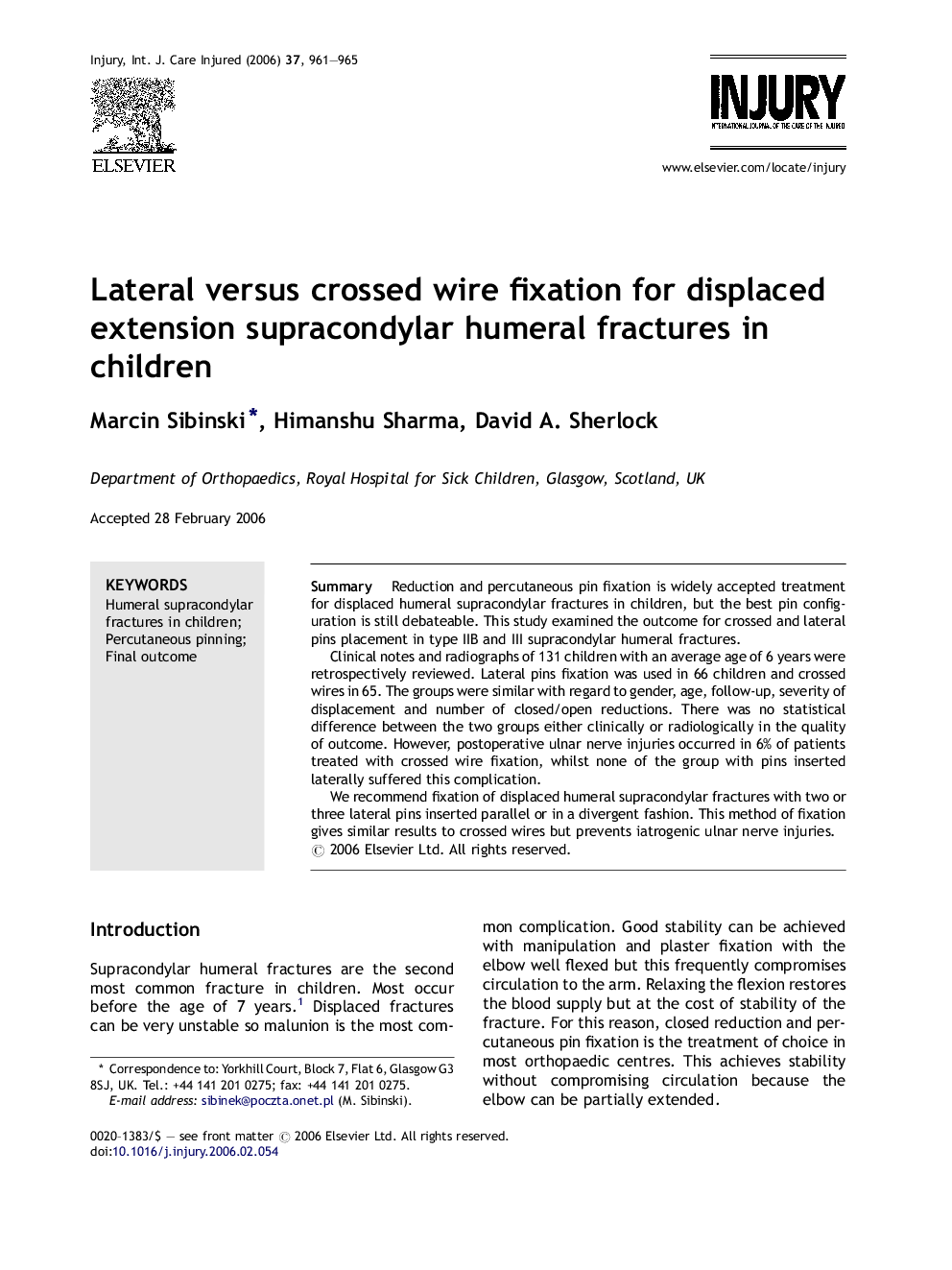| کد مقاله | کد نشریه | سال انتشار | مقاله انگلیسی | نسخه تمام متن |
|---|---|---|---|---|
| 3242764 | 1206127 | 2006 | 5 صفحه PDF | دانلود رایگان |

SummaryReduction and percutaneous pin fixation is widely accepted treatment for displaced humeral supracondylar fractures in children, but the best pin configuration is still debateable. This study examined the outcome for crossed and lateral pins placement in type IIB and III supracondylar humeral fractures.Clinical notes and radiographs of 131 children with an average age of 6 years were retrospectively reviewed. Lateral pins fixation was used in 66 children and crossed wires in 65. The groups were similar with regard to gender, age, follow-up, severity of displacement and number of closed/open reductions. There was no statistical difference between the two groups either clinically or radiologically in the quality of outcome. However, postoperative ulnar nerve injuries occurred in 6% of patients treated with crossed wire fixation, whilst none of the group with pins inserted laterally suffered this complication.We recommend fixation of displaced humeral supracondylar fractures with two or three lateral pins inserted parallel or in a divergent fashion. This method of fixation gives similar results to crossed wires but prevents iatrogenic ulnar nerve injuries.
Journal: Injury - Volume 37, Issue 10, October 2006, Pages 961–965